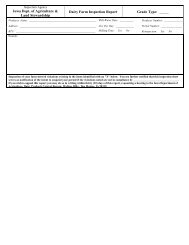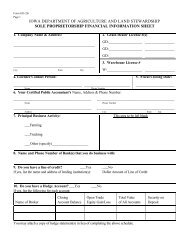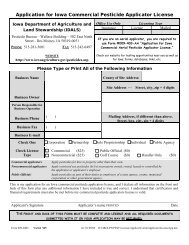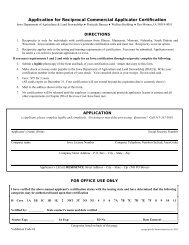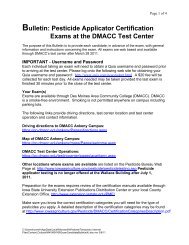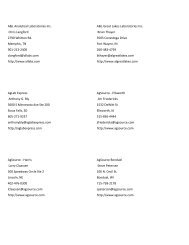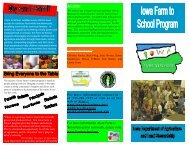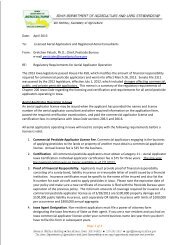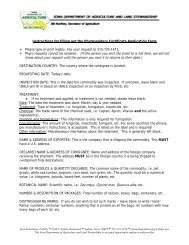Exhibit C: Detailed Background, Work Group Recommendations
Exhibit C: Detailed Background, Work Group Recommendations
Exhibit C: Detailed Background, Work Group Recommendations
Create successful ePaper yourself
Turn your PDF publications into a flip-book with our unique Google optimized e-Paper software.
Impact to Iowans: Costs for monitoring and planning. Water quality improvements.<br />
Potential improvements in wildlife habitat. Potential for increased cyanobacteria blooms<br />
due to the introduction of high nutrient water in the wetland, increased wetland water<br />
storage capacity.<br />
Agencies Affected: Individual drainage districts and county governments, IDALS‐DSC, IDNR,<br />
NRCS, FSA, U.S. Fish and Wildlife service, EPA<br />
Interest <strong>Group</strong>s that Support or Oppose: Iowa Drainage District Association and Iowa Land<br />
Improvement Association support. Other state and federal agencies are working with IDALS<br />
to develop pilot projects to refine this concept.<br />
Funding Considerations: Could be funding‐neutral for the public once any research and<br />
evaluation is complete if existing wetland restoration programs are redirected for this<br />
purpose. If done as part of drainage infrastructure replacement, costs would be borne by<br />
drainage district landowners to cover required mitigation.<br />
Recommendation #9: Develop, implement, monitor and document a watershed project that has as<br />
a primary goal high infiltration of rainfall under non‐saturated soil moisture conditions in both rural<br />
and urban areas.<br />
Required Action Not Including Legislation: None.<br />
Legislation Required: None.<br />
Impact to Iowans: Primary impacts are rural and on cropland.<br />
This could demonstrate reduced negative impacts from high‐frequency rainfall events and<br />
benefits to soil quality.<br />
Agencies Affected: DNR, IDALS, NRCS. Most crop producers not already using<br />
comprehensive conservation systems will need significant technical assistance to comply<br />
with this requirement.<br />
Interest <strong>Group</strong>s that Support or Oppose: Not aware of any.<br />
Funding Considerations: Funding needs are not the biggest barrier for this action.<br />
Practices to achieve this requirement would be low cost UNLESS land use changes are<br />
needed.<br />
Recommendation #10: Conduct a cooperative pilot project for the evaluation of strategies for<br />
reducing severe scour erosion and sand deposition by floodwaters under various soils/geology<br />
conditions. Strategies would include but are not limited to levee and road modifications,<br />
reforestation and grassland seeding. This project should be part of an overall watershed plan at the<br />
HUC 8 scale or larger.<br />
Required Action Not Including Legislation: Flood Risk Management Team (FRMT) to<br />
facilitate coordination of work by USACE, NRCS and FSA. NRCS through the Wetlands<br />
Reserve Program and FSA through the Conservation Reserve Program (as well as the<br />
enhancement programs allowed for both programs.)<br />
Legislation Required: None.<br />
Impact to Iowans: Could provide information on strategies that could be used state‐wide.<br />
69



![Ch 44, p.1 Agriculture and Land Stewardship[21] IAC 4/23/08 - Iowa ...](https://img.yumpu.com/49992480/1/171x260/ch-44-p1-agriculture-and-land-stewardship21-iac-4-23-08-iowa-.jpg?quality=85)

